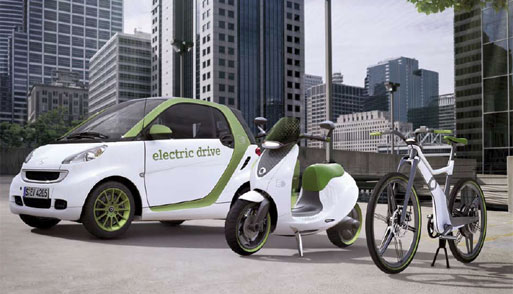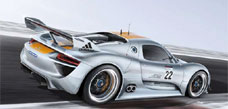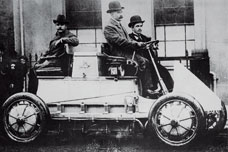A tradition in looking to the future
Daimler is the world’s first car manufacturer to develop batteries for automotive use up to readiness for series production and from 2012 onwards will produce them as well – from hybrid to electric cars and from passenger to commercial vehicles. The company has already filed over 600 patent applications for batterydriven vehicles. Back in 1969, Daimler-Benz AG, as it was called then, presented the world’s first commercial vehicle with a hybrid drive – to date, no other manufacturer in the world has succeeded in putting more vehicles with this drive on the road.
At the World Exhibition in Paris over a hundred years ago, Ferdinand Porsche already presented the first hybrid Porsche, the “Lohner-Porsche electromobile”. It was followed by the Lohner-Porsche
”Semper Vivus” Full Hybrid.
Based on this drive principle of the Lohner-Porsche, the Porsche company developed a high-performance hybrid for the 21st century.
The “Lohner-Porsche Electromobile”
The Lohner-Porsche, for which Ferdinand Porsche and Ludwig Lohner were awarded the Austrian patent no. 19645 for an “electric wheel hub drive” featured a precision-engineered front wheel drive free of any influences on the steering, which was only to be possible on vehicles with a combustion engine decades later.
A trade journal praised the design in the following terms: “The revolutionary innovation completely eliminates all intermediary gearings like gearwheels, belts, chains, differential gears etc. In short, it is nothing less than the production of the first ever transmission-free vehicle.” The automobile reached a top speed of 50 km/h, which was highly impressive at the time, and could travel 50 km on its 410 kg lead battery.

smart fortwo electric drive, smart e-bike and smart e-scooter: Intelligent solutions for local emission-free urban mobility The “Lohner-Porsche Electromobile†The Lohner-Porsche, for which Ferdinand Porsche and Ludwig Lohner were awarded the Austrian patent no. 19645 for an “electric wheel hub drive†featured a precision-engineered front wheel drive free of any influences on the steering, which was only to be possible on vehicles with a combustion engine decades later. A trade journal praised the design in the following terms: “The revolutionary innovation completely eliminates all intermediary gearings like gearwheels, belts, chains, differential gears etc. In short, it is nothing less than the production of the first ever transmission-free vehicle.†The automobile reached a top speed of 50 km/h, which was highly impressive at the time, and could travel 50 km on its 410 kg lead battery







 download .pdf
(257 KB)
download .pdf
(257 KB)